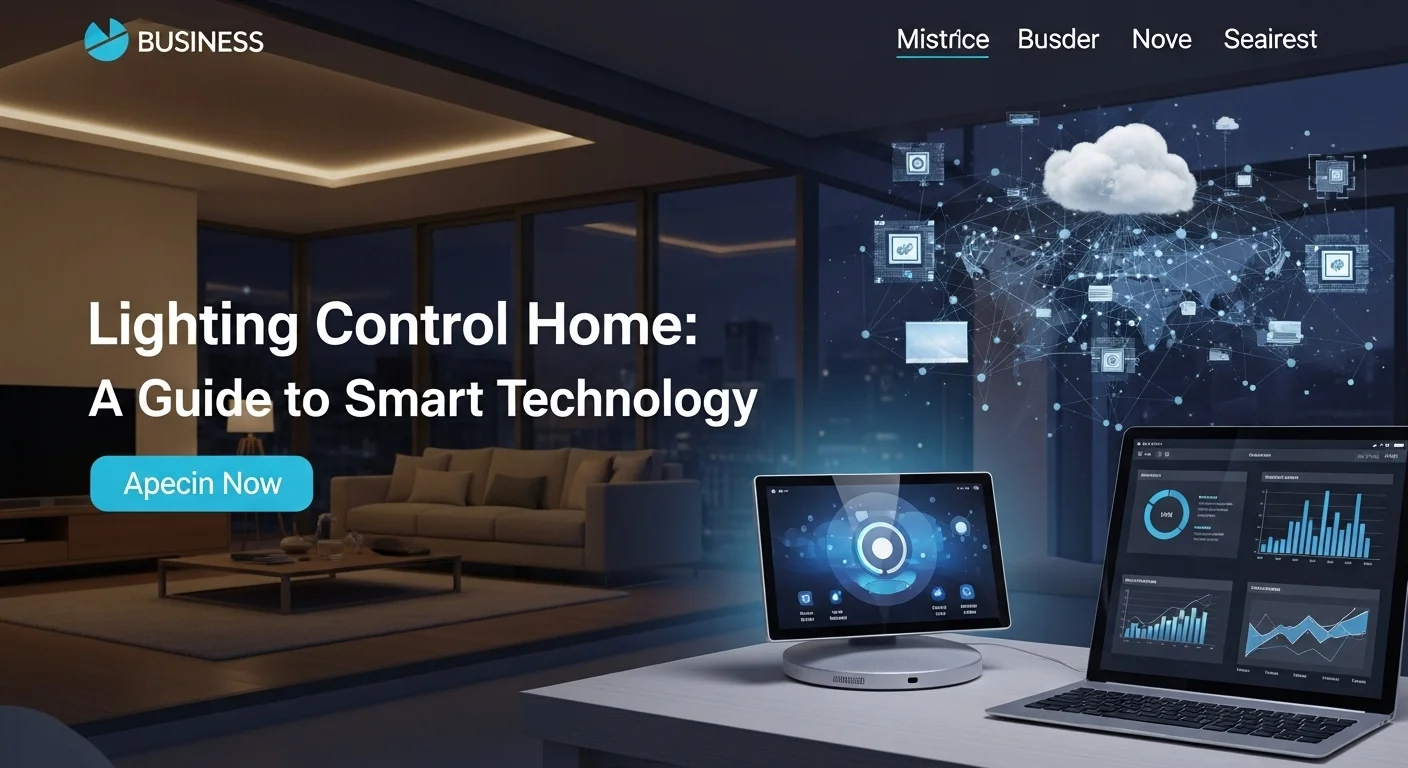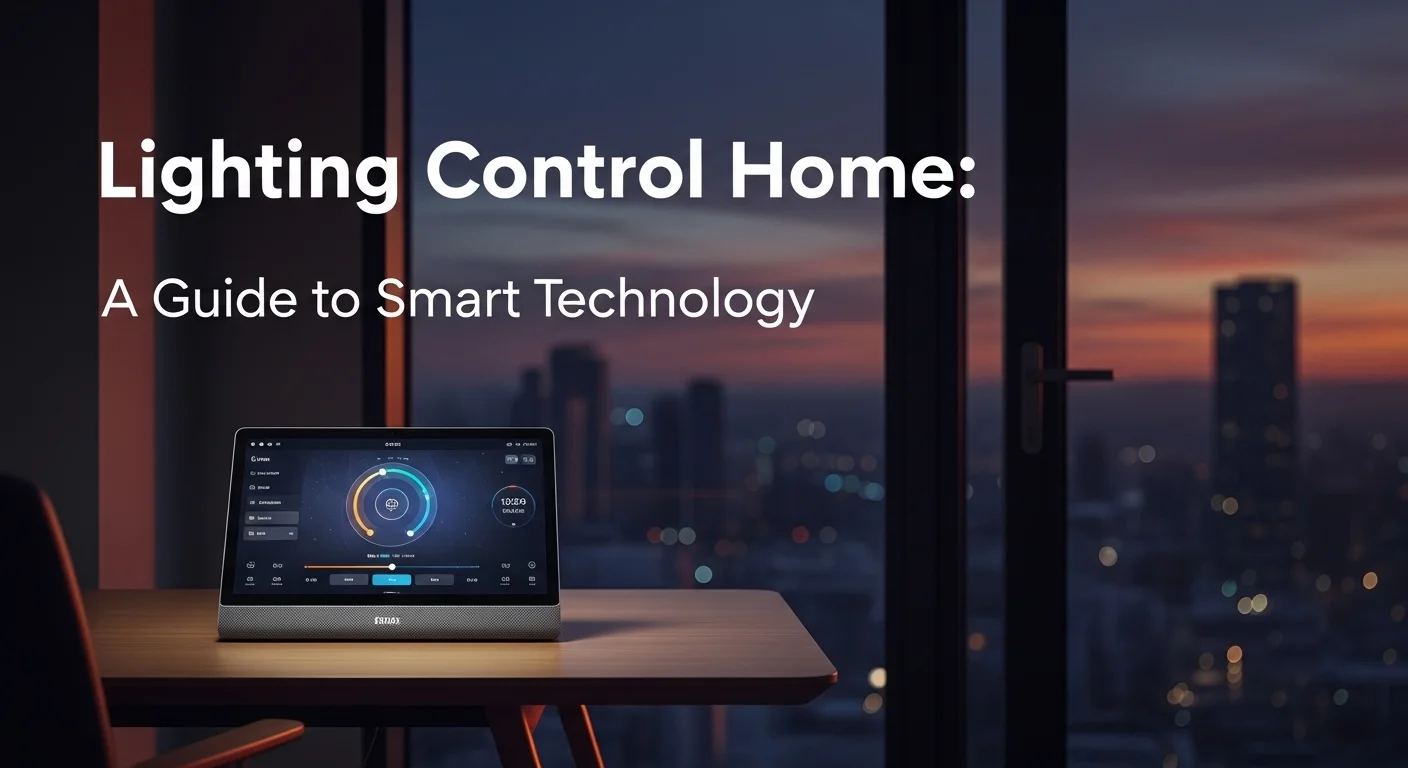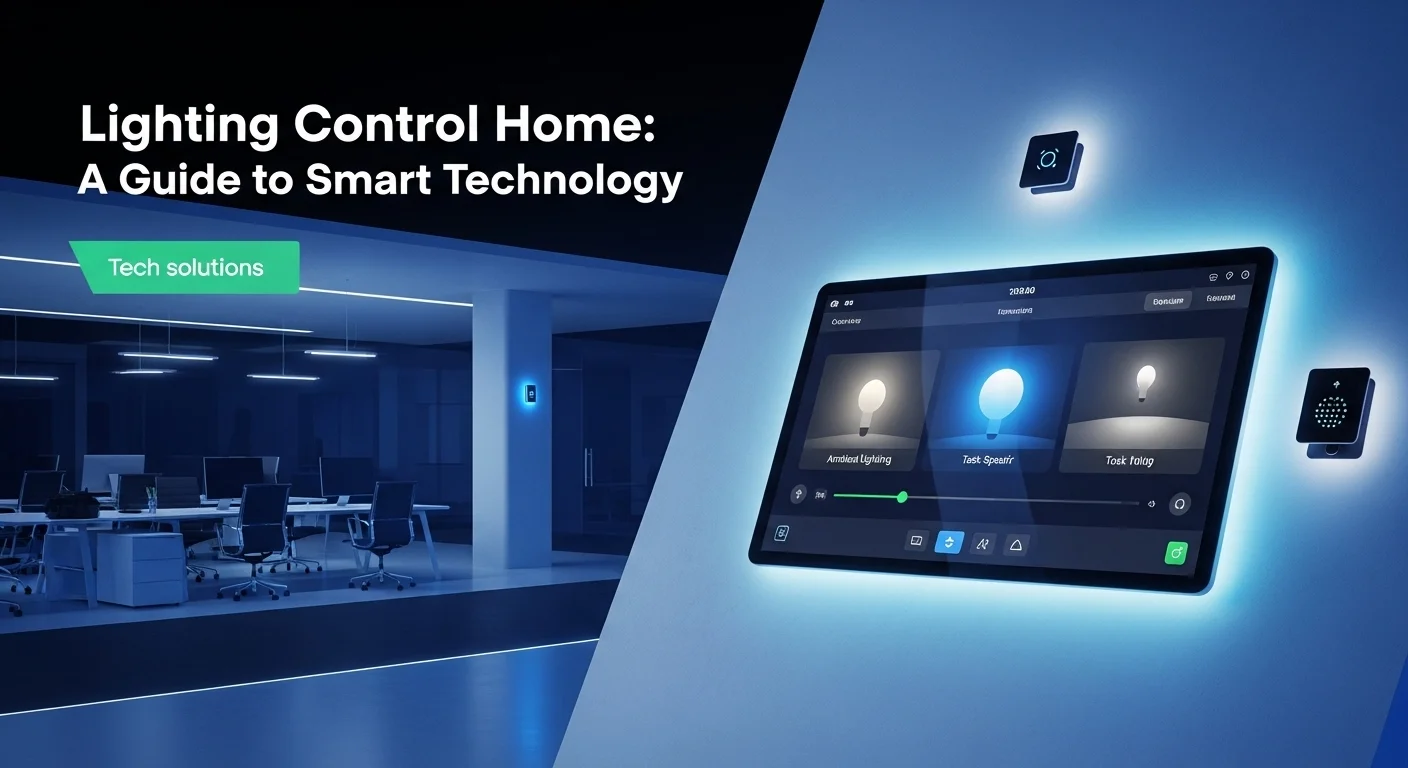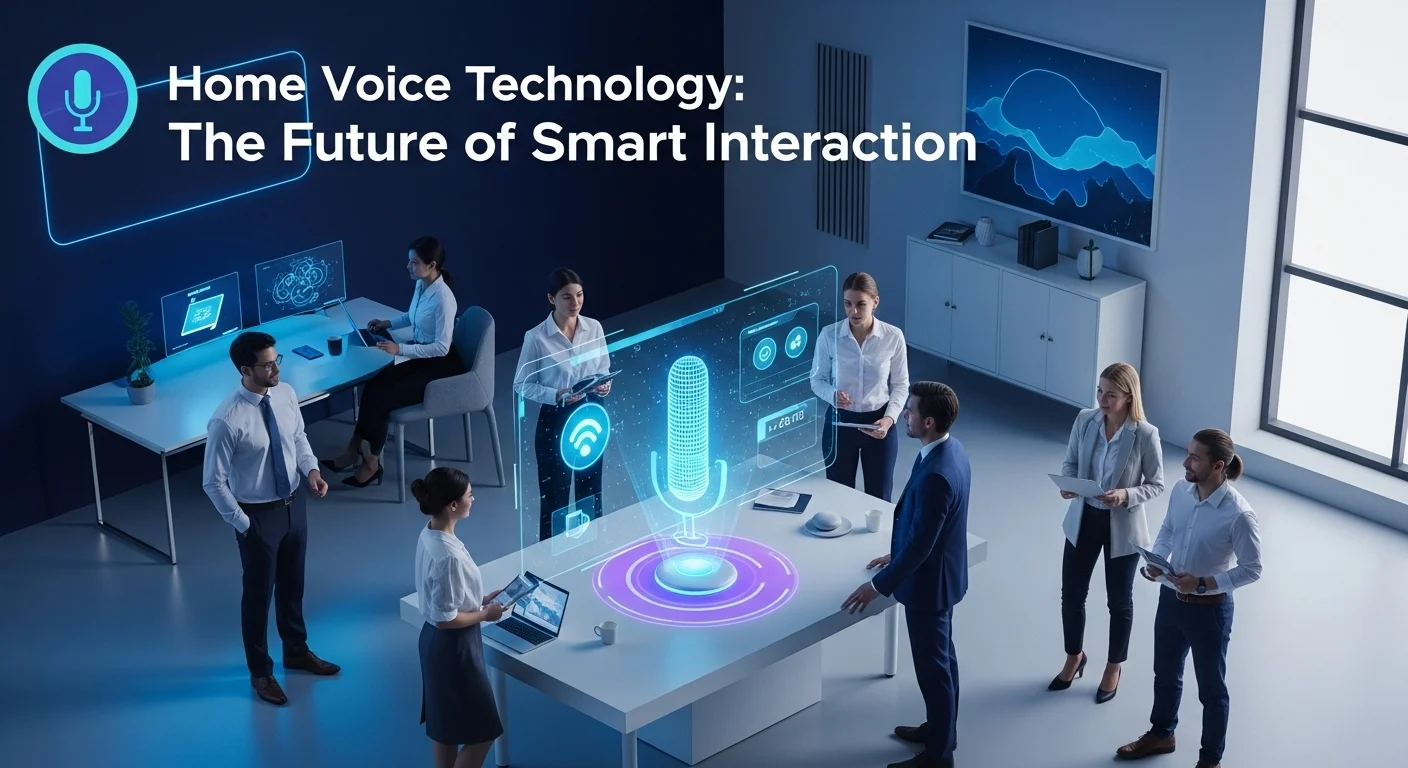Smart Home Lighting Control: A Personal Guide to a Brighter Home

Executive Summary
I remember when 'smart lighting' just meant a clapper. Today, it’s the heart of a truly intelligent home. It’s not just about turning lights on with your phone; it’s about creating environments that save energy, boost your security, and even improve your mood. For my business clients, it’s a game-changer in retail and office design. For homeowners like you, it's the key to a home that truly understands you. In this guide, I'll break down the tech, from Zigbee and Matter to wired systems, in simple terms. We'll explore the real benefits—like lower energy bills and better sleep—and look at the key components you need. My goal is to give you the confidence to unlock the full potential of smart lighting in your own space.
Table of Contents
Table of Contents
What Is Smart Home Lighting and Why Does It Matter?
The idea of smart lighting control has grown from a simple luxury to a core piece of modern living. At its heart, a connected lighting system is an intelligent network that lets you manage your home's lights from one central place or even remotely. I've seen it evolve firsthand, and it's so much more than a fancy on/off switch. We're talking about the ability to dim lights, change their color and temperature, set schedules, and create automated 'scenes' for everything you do. The technology works by connecting smart bulbs, switches, and sensors into a single network, giving you total command over your home's atmosphere. This network can be as simple as a few Bluetooth bulbs in one room or a sophisticated whole-home lighting system that controls every single light in your house. Its importance today is massive, as it brings together some of the biggest trends in tech: the Internet of Things (IoT), energy efficiency, and human-centric design.
The real magic of these systems is their power to create a more responsive, efficient, and personal living space. By linking your lights to the internet, you can control them from anywhere using a smartphone app, your voice, or a dedicated wall panel. This remote access is a game-changer. For example, I always use the 'vacation mode' when I travel; it turns lights on and off randomly, making it look like someone's home and giving me incredible peace of mind. On top of that, integrating sensors for motion or daylight automates everything, ensuring lights are only on when they're needed. This is where you see huge energy savings. Modern LED smart bulbs are already incredibly efficient, but when you pair them with smart controls, the savings multiply. The system can automatically dim lights when the sun is bright or turn them off when a room is empty, cutting down on wasted electricity without you lifting a finger.
Beyond the Home: Business Applications and Broader Impacts
This technology isn't just for homes; it offers tremendous value to businesses. In commercial spaces, these are known as networked lighting controls, and they are essential for managing large buildings. In an office, a smart lighting system can be tailored to boost productivity. By adjusting the color of the light to mimic the sun's natural cycle, it can support employees' circadian rhythms, helping them stay focused and less tired. I've worked with retailers who use dynamic lighting to spotlight products and guide shoppers through the store, creating a more engaging experience. The hospitality industry also sees huge benefits. Hotels can offer guests a premium, personalized room experience while the management saves a fortune on energy across the entire property.
What's more, the data these systems collect is becoming a goldmine. In a smart building, the lighting network acts as a web of sensors, gathering information on occupancy and movement. This data helps optimize not just lighting but also heating, cooling, and even cleaning schedules, making building management far more intelligent. The evolution of home lighting control is a stepping stone toward the bigger picture of smart cities, where everything is connected to conserve resources and improve our quality of life. The hub for all this is often a lighting control panel, which acts as the command center, making complex automation simple for the user. As the technology becomes more standardized with protocols like Matter, its role as a fundamental part of our connected future is set in stone.
The Real-World Benefits of Smart Lighting Control
The advantages of installing a smart lighting system are widespread, affecting everything from your bank account to your health. The most obvious win is energy efficiency. Swapping old bulbs for smart LEDs and adding smart controls can seriously slash your lighting-related energy use. Features like dimming and scheduling mean you're never wasting electricity. A simple voice command or automated schedule can turn off every light you accidentally left on.
Convenience is another huge reason people love it. Controlling every light from an app, your voice, or a sleek wall panel is a major lifestyle upgrade. Imagine saying, 'Movie Night,' and watching the main lights dim, accent lights turn on, and smart blinds close—all at once. Or having your lights slowly brighten in the morning for a gentle, natural wake-up call instead of a jarring alarm.
Your home's security gets a serious boost as well. As I mentioned, the 'Vacation Mode' is a powerful deterrent. But you can also integrate it with other security devices. For instance, if a camera detects motion outside, it can trigger all your lights to blast at full brightness, startling any potential intruder. Motion-activated lights in hallways also prevent trips and falls in the dark, which is a simple but effective safety feature for any family.
Finally, let's talk about ambiance and well-being. This is a benefit people often discover after installation and fall in love with. The ability to fine-tune the color and brightness lets you create the perfect mood for any moment—from bright, cool light for working to a warm, soft glow for relaxing. This leads to the concept of Human-Centric Lighting (HCL), which uses light to support our natural body clock. By providing cool-toned light during the day and warm-toned light at night, these systems can help you sleep better and improve your overall mood. It's not just smart tech; it's wellness tech, making your home a healthier place to live.

Your Complete Guide to Smart Lighting Tech and Solutions
Diving into the world of smart home lighting reveals a fascinating ecosystem of hardware and software. Understanding these pieces is key to making the right choice, whether you're a DIY enthusiast or a business planning a large-scale project. The first big decision you'll face is whether to go with a wired or wireless system. Think of it like this: wired is the super-reliable, built-in highway, perfect for a new home. Wireless is the flexible, easy-to-install network of local roads you can add anytime.
Wired vs. Wireless: The System's Backbone
Wired lighting control systems, from top-tier brands like Lutron and Crestron, are the gold standard for reliability. In these setups, keypads, sensors, and lights are physically wired to a central processor. This direct connection is rock-solid and free from the wireless interference that can sometimes be an issue. Wired systems are ideal for new construction or major renovations where running cables is easy. They're the go-to for large, luxury homes and commercial buildings where you need flawless performance. The control point is often a sleek, permanent lighting control panel on the wall.
Wireless lighting control, on the other hand, offers incredible flexibility and is much easier to install, making it perfect for existing homes. These systems use radio frequencies to communicate. Instead of running new wires, you just swap out your old switches for smart ones or screw in smart bulbs. This drastically cuts down on installation time and cost. The most common wireless protocols you'll hear about are:
- Wi-Fi: Many entry-level devices connect directly to your home's Wi-Fi. It's simple and doesn't require a separate hub, but if you add too many devices, it can slow down your network.
- Zigbee and Z-Wave: These are like dedicated, private languages for your smart devices. They create a 'mesh network,' where each device can pass the signal along, making the network stronger and more reliable. They operate on different frequencies from Wi-Fi, so they won't interfere. You'll typically need a small hub to connect them to the internet.
- Bluetooth Mesh: This is another reliable and low-power mesh network that's becoming very popular for lighting. It's great because you can often control devices directly from your phone without a hub.
- Matter: This is the universal translator we've all been waiting for. Backed by giants like Apple, Google, and Amazon, Matter is a new standard designed to make devices from different brands work together seamlessly. It promises to simplify the smart home experience for everyone.
Hybrid systems also exist, blending the reliability of wired with the flexibility of wireless to get the best of both worlds for a single project.
The Key Components of a Smart Lighting System
No matter the architecture, every whole-home lighting system is built from a few core components:
- The Controller/Hub: This is the brain of the operation. In a wired system, it's a processor tucked away in a utility closet. In a wireless system, it's usually a small bridge you plug into your router (like the Philips Hue Bridge). It runs schedules, executes your commands, and makes sure everything communicates properly.
- How You Control It: This is how you interact with your lights. It could be an app on your phone, a voice command to Alexa or Siri, or a physical device on the wall. Physical controls are crucial for everyday use and include:
- Smart Switches and Dimmers: These replace your traditional wall switches and can make any light fixture 'smart'. This is my preferred approach for things like chandeliers or recessed lighting with multiple bulbs.
- Keypads: These are advanced wall controls with multiple buttons you can program for specific 'scenes,' like 'Cooking,' 'Dining,' or 'All Off'.
- The Lighting Control Panel: This can be a wall-mounted touchscreen giving you full control, or the physical box where a centralized system's wiring comes together.
- The Lights Themselves: Your main choice is between smart bulbs and smart fixtures.
- Smart Bulbs: These bulbs (like those from Philips Hue) have the wireless tech built right in. You just screw them in. They're perfect for lamps and fixtures where you want to control individual bulbs or change colors.
- Smart Fixtures: These are all-in-one fixtures with the LEDs and control technology integrated. They offer a clean, minimalist look.
- Sensors: Automation is what makes a system truly smart, and sensors are what make it happen.
- Occupancy/Vacancy Sensors: These detect when someone is in a room, turning lights on when you enter and off after you leave.
- Motion Sensors: Often used for security and convenience, these trigger lights in hallways or outdoors.
- Daylight Sensors: These measure natural light and automatically adjust your indoor lights to maintain a consistent level, saving a lot of energy.
Business Solutions and Scalability
For businesses, the considerations for a commercial lighting control system are scaled up. Reliability and the ability to manage thousands of lights are critical. Systems from Leviton, Cooper, and the DALI protocol are designed for these massive applications. DALI, for instance, gives every single light fixture a unique address for precise control. These commercial systems are built to meet strict energy codes and often come with advanced software that gives facility managers detailed reports on energy use and occupancy patterns. This allows them to run the building more efficiently and safely, making the investment pay off through energy savings and improved employee comfort.

Tips and Strategies to Perfect Your Smart Lighting Experience
Alright, you've got the basics down. Now, let's talk strategy. This is where you turn a collection of smart gadgets into a truly intuitive system that works for you. A well-designed system should feel like a natural part of your home, not a complicated tech project. Whether you're doing it yourself or hiring a pro, careful planning is the key to success.
Best Practices for Planning and Installation
Before you buy a single bulb, take a moment to plan. Walk through your home and think about how you use each room. What do you want the lighting to do? Do you need bright, focused light for cooking, soft ambient light for relaxing, or colorful effects for a media room? Think about your daily routines. A 'Good Morning' scene could slowly brighten your bedroom, while a 'Goodbye' scene turns everything off with one tap. This planning will guide you on what kind of lights and controls you need and where to put them. My advice is to think about a whole-home lighting system from the start, even if you only plan to build it room by room. This ensures everything will work together down the road.
When it comes to installation, you can go the DIY route or hire a professional. For simple things like screwing in a few smart bulbs, DIY is easy. Installing smart switches is a bit more involved since it requires basic electrical knowledge. If you're not 100% comfortable working with wires, please hire a licensed electrician. For a full wired or hybrid system, professional installation is a must. They'll ensure everything is up to code, the central lighting control panel is set up correctly, and the whole system runs smoothly.
Creating Scenes and Automations That Work for You
The real fun with smart light control begins with scenes and automations. A 'scene' is a preset combination of light settings you can activate with a single command. Here are a few ideas I love:
- Focus Scene: Bright, cool-white light (around 4000K-5000K) in your office to keep you alert.
- Relax Scene: Warm, dim light (around 2700K) in the living room to help you unwind.
- Movie Night Scene: Dims the main lights to 10%, turns on soft backlighting behind the TV, and maybe adds a splash of deep blue from an LED strip.
- Entertain Scene: Creates a vibrant, welcoming atmosphere with different light levels and colors for when guests are over.
Automation takes this a step further by triggering actions automatically. This is where your home starts to feel truly intelligent:
- Geofencing: Your system uses your phone's location to turn lights on as you pull into the driveway and off when you leave.
- Time-Based: Schedule your porch lights to turn on at sunset and off at sunrise. Simple, but so effective.
- Sensor-Driven: A motion sensor in the hallway can turn lights on to a dim 20% after 10 PM, so you can grab a midnight snack without being blinded.
- Integration-Based: Link your lights to other devices. If a smart smoke alarm goes off, all the lights in the house could flash red to wake everyone up.
Cybersecurity: A Quick Guide to Protecting Your Smart Home
Let's be real: any device connected to the internet can be a risk. But don't let that scare you off. Securing your smart lighting system is easier than you think and absolutely essential. Here are the non-negotiables:
- Lock Down Your Wi-Fi: Use a strong, unique password and enable WPA3 encryption on your router. A separate guest network is also a great idea.
- Change Default Passwords: This is a big one. Always change the default username and password on your router and any smart home hub.
- Use Two-Factor Authentication (2FA): Enable this on your smart home apps. It adds a powerful extra layer of security.
- Keep Everything Updated: Manufacturers release firmware updates to patch security holes. Turn on automatic updates whenever you can.
- Consider a Separate Network: For more advanced users, putting all your IoT devices on a separate virtual network (VLAN) can isolate them from your main computers, containing any potential breach.
Lighting for Wellness: The Magic of Human-Centric Lighting
Beyond convenience, you can use your smart lighting to actively improve your well-being. This is the idea behind Human-Centric Lighting (HCL). Our bodies are tuned to the sun's 24-hour cycle. Bright, blue-ish light in the morning tells our brains to be alert. As the sun sets, the light becomes warmer and dimmer, signaling it's time to produce melatonin and prepare for sleep. Our modern indoor lifestyles can throw this natural rhythm out of whack.
A tunable home lighting control system can fix this by mimicking the sun's natural daily progression. Imagine your lights gently waking you up with a cool, morning glow and then slowly warming up throughout the evening to help you wind down. Many systems now offer this as a built-in feature. From my experience, this simple automation can have a real, positive impact on your sleep, mood, and productivity. It's using technology to work * Con your body, not against it. For more information on the standards making this all possible, a great resource is the Connectivity Standards Alliance, the organization behind the Matter protocol.
Expert Reviews & Testimonials
Sarah Johnson, Business Owner ⭐⭐⭐
The information here is solid, but as a business owner, I'd have loved a few more specific case studies for commercial spaces. Still, a good starting point.
Mike Chen, IT Consultant ⭐⭐⭐⭐
As an IT consultant, I appreciate the technical breakdown. It helped clarify the differences between protocols like Zigbee and Matter. A very useful read.
Emma Davis, Tech Expert ⭐⭐⭐⭐⭐
Fantastic article! This is one of the most comprehensive and easy-to-understand guides on smart lighting I've seen. It perfectly explains how to go from individual components to a whole-home system. Highly recommended!



